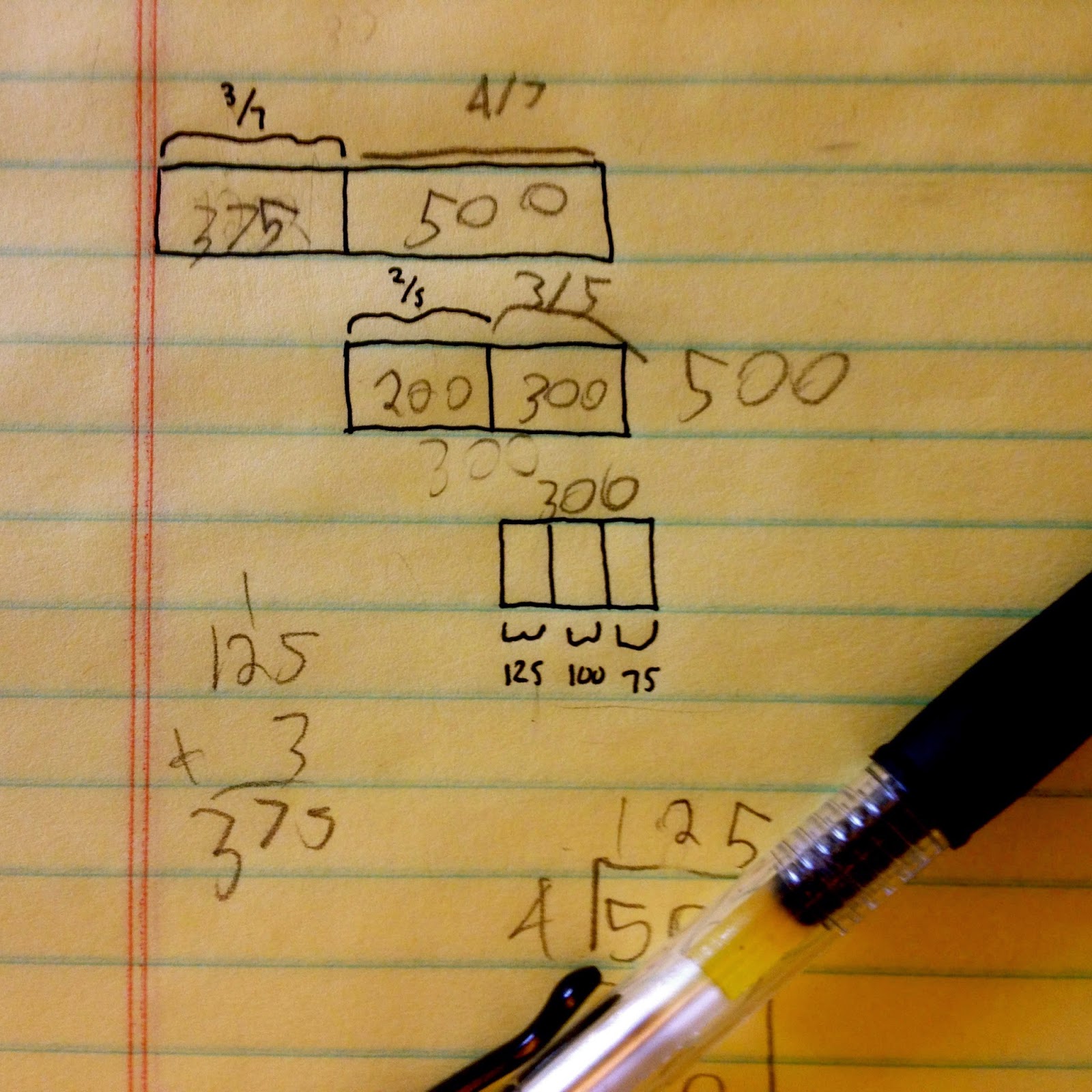So Molly is a music teacher.
And she just won a whole bunch of money at the race track.
She spent 3/7 of that money on music stands.
Then she spent 2/5 of what she had left over on reeds.
Then she spent $125 on a new hat. Then $100 on books. Then $75 baby wipes.
You can never have enough baby wipes.
How much money did Molly spend on reeds and how much did she win at the race track?
Molly likes the ponies and clarinet players.
Can't have enough of those either.
The point is is that this was my homework last night. Okay, maybe not my homework, but it was definitely the homework of a person who lives in my house.
He's the short one.
And maybe I made that bit up about the race track and the baby wipes. But the word problem is essentially the same.
Now if you're crazy enough, I suggest you try to solve that particular problem. It's like really easy, assuming you know how to add, multiply, divide, and subtract fractions.
Oh, and you know how to draw boxes.
Boxes are really important. Like . . . really important.
The answer, I'll have you know, is $200 on reeds and $875 at the track.
This is the kind of word problem you get to enjoy now that your children are taking Common Core Mathematics.
I've railed about this kind of stuff before, but I caught myself getting just slightly irked again about the whole process. And for parents out there, I think it's time I broke down for you the five steps of dealing with Common Core in your own home without drinking yourself to sleep at night:
Step One:
He/she brings you a sheet of paper because she/he/it is confused. You smile and think to yourself this should be easy, it's fourth grade math after all, I'm not even gonna pause the movie I'm watching.
Step Two:
You read the particular problem and you have absolutely no idea what the hell it's asking for. You have no idea what it's talking about and you're concerned that you've forgotten how to read the english language. You go ahead and pause the movie.
Step Three:
You have to move into another room for better lighting. You read each sentence very carefully while the short one stands over your shoulder looking very anxious. You get a sharp pain in your stomach because of stage fright, and you read it again, but this time, you convince yourself that there's not enough information in the question, and you're about to write a note where the answer goes saying something like "My name is Joshua Macrae and I'm giving my son permission to skip this question." But then you realize that that would be the coward's way out, and you don't want to raise your son to be a coward. Thank god for the internet. The internet is where you discover the boxes.
Remember . . . the boxes are important.
Like really important.
Step Four:
You learn how to diagram (using boxes, example above) because . . . internet . . . and you isolate all the individual pieces of information in the word problem and then you begin to fill in information that you can solve.
If this takes you less than an entire page of your yellow note pad, you're my hero. But solve it you will . . . I have faith in you . . . your daughter/son/crayon has faith in you . . . there is no turning back now . . . and it's 5:13pm so you're allowed a glass of wine.
But that's not all.
Step Five:
You're the teacher now. I know how good it feels to solve a fourth grade math problem. I've felt less like a hero saving someone from drowning, but you can't send your child to school with six or seven sheets of yellow pad math that is clearly in your hand writing. You could just have your daughter/son/chickfilet copy your work, but how is that helpful? I mean . . . you can get back to your movie later.
No . . . You're the teacher now.
You've got to make sure that you can pass on this learning. So when the teacher asks your daughter/son/bordercollie how they got the answer, they don't have to lie and tell them Jesus presented the answer to them on fifteen golden plates.
So you start by drawing more boxes and making your daughter/son/drummer fill in the blanks (as you see here in my example.) Then, once they get the feel for this kind of questioning, you have them draw their own boxes.
Pro-Tip: You cannot, must not, get up from the table at this point. They still need your strength. They still need your courage. They still need a calm assurance. If you say "Alright . . . now draw your own boxes." and go back to your movie, I swear to God that your child/sockpuppet will panic and forget everything.
You cannot get up from that table until they have solved an entire problem all the way through. Once that is done . . . you are done . . . dinner is served.
And now you get to go to sleep knowing one of two things. Either you are the best parent in the world, or that LSD does have long term side effects.
But I'm betting on the best parent thing.

No comments:
Post a Comment